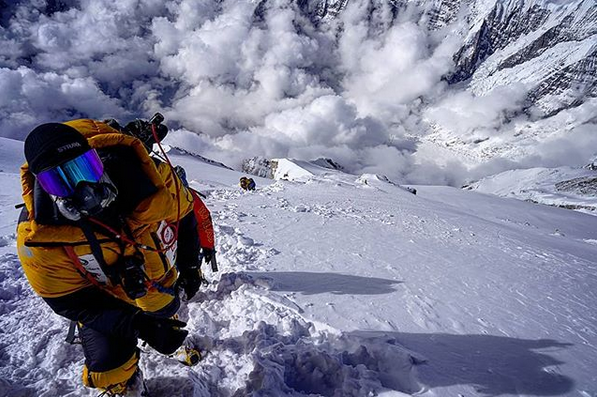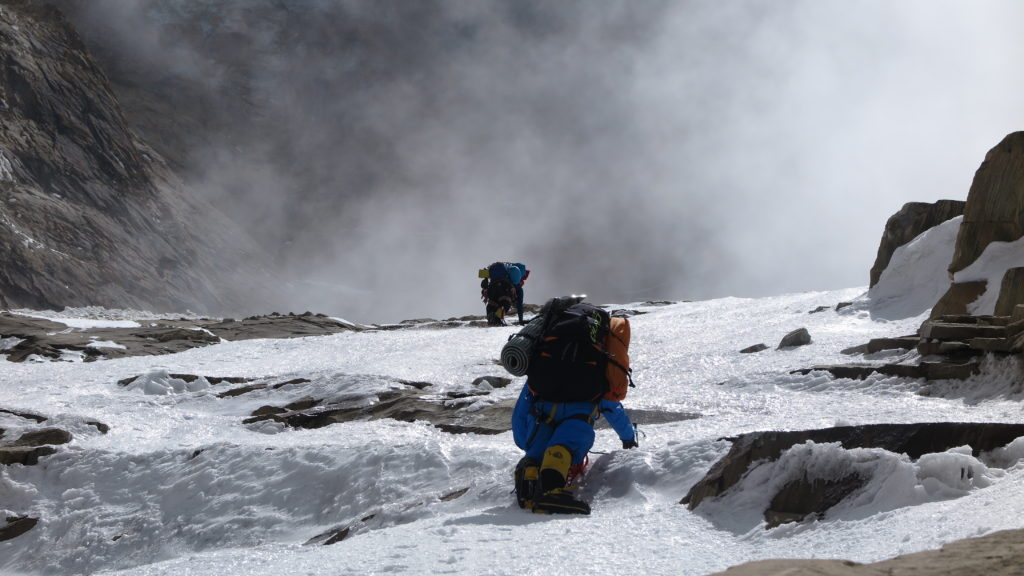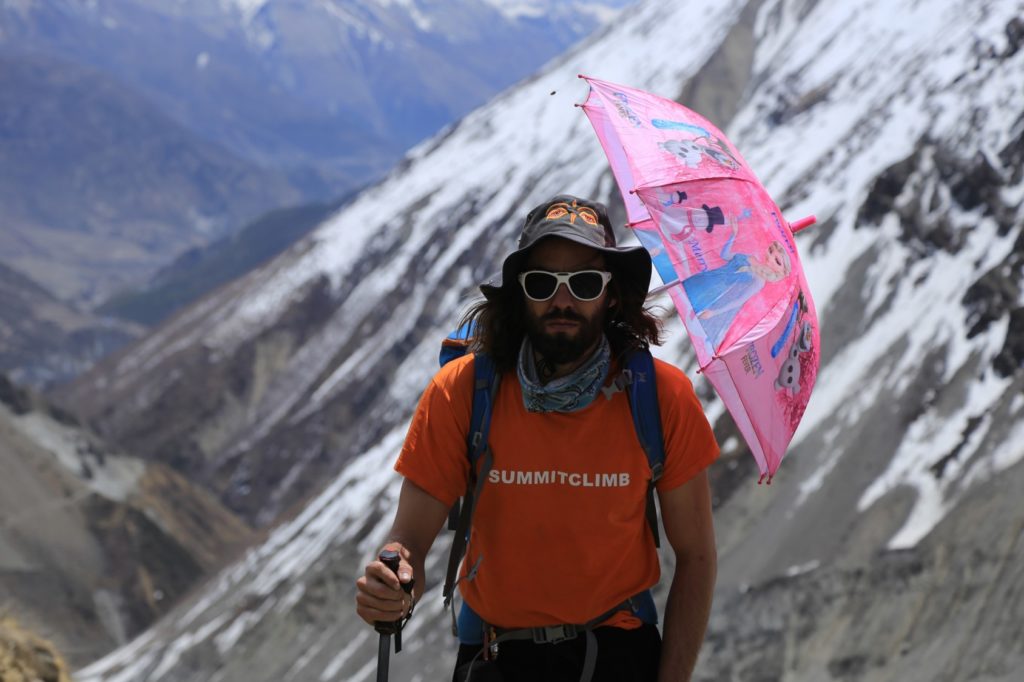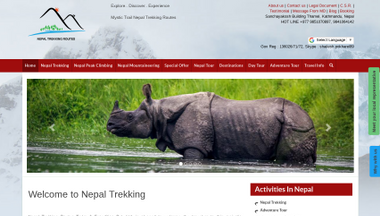When planes, trains and automobiles are not available to move your stuff, you do what you have to, to move your stuff. And that’s what we are seeing right now from Kathmandu to Everest Base Camp.
Pause for a moment and think about how much gear it takes to support a team, it can be overwhelming. Even a small team of a handful of climbers will have a couple of cooks, separate tents for dining, cooking and sleeping. Then the large teams add another few tents for storage and toilets. The high-end guides will have communications tent and even a “relaxation” tent.
All of this is at base camp where you live, eat and sleep for the better part of six weeks. Speaking of food, it also must be stored somewhere and there has to be fuel for the stoves, and sometimes heaters. Then there are generators, solar panels and on and on. Oh and don’t forget a few thousand oxygen bottles.
As you go higher, climbers share tents and often eat in the cooking tent. Then there are the fixed ropes with snow bars, pitons, carabiners, ladders and everything else you need to actually move up the Hill. Regardless, the problem remains of how to get that gear up there.
So how does all the stuff get to base camp? On the Tibet side, it’s straightforward. Huge trucks haul it in on paved roads. However, it’s a different story on the Nepal side. Since Everest is within the Sagarmatha National Park where motorized vehicles are not allowed on the trails, everything is transported on the backs of people or animals or in a heavy duty helicopter. Lets first look at how the expeditions move their group gear to base camp and then how the personal gear is handled.

- Base Camp tents

- Inside the Himex Dome

- Himex White Pod
AirYak

Freight helicopter at Syangboche
It may seem obvious to just use a helicopter to ferry tons of tents, stoves, fuel, etc. from Kathmandu to the foot of the Khumbu Icefall, but they are expensive and risky. If one goes down with all your gear, your season might be lost. Usually a version of a Russian cargo helicopter flies gear to a relatively low landing strip close to Namche Bazaar, at Syangboche, at 12,410’/3782m. Any higher might be impossible given the heavy loads. From there, the gear is shifted to animals and people.
Most expeditions use a combinations of animals – yaks and dzomos aka dzo. This last beast is a cross between a yak and a cow and can haul loads under 14,000 feet. They are smaller than yaks but not as happy! OK, so how do I know? Well all I know is that I get happy seeing a yak, so they must be happy as well. 🙂
All kidding aside, yaks are huge furry beast of burden that can seemingly go forever at glacial speed. They are colossal animals with a full-grown male weighing in at 1,400 pounds and standing 5.5 feet at the shoulders. Yaks have three times more red blood cells than regular cows thus can go higher than their cross-breed siblings. Also their long, thick hair insulates their bodies from winter temperatures that can plummet to -30C (-22F) or colder.
Continuing with “more than you wanted to know about yaks”, they are most comfortable above 14,000 feet probably due to generations of genes nurtured on the high Steppes of Tibet where Nomads constantly moved them between summer and winter pastures at 14,000 to 16,000 feet high. They will forage for food as high as 20,000 feet in the summer but usually don’t go lower than 12,000 feet. Today, many yak owners in Nepal will not let them go lower than Namche fearing malaria, parasites or other diseases, often carried by cows, sheep and goats. They are treated very well by their owners due to their cash value from expeditions and then their meat at the end of life.

Continue reading →
Filed under: Adventure Travel, Alan Arnette, Climbers, climbing, Equipment, Everest, Expedition, guides, Himalayas, mountaineering, Nepal, Peak Climbing, photo gallery, rafting, Rock climbing, Routes, Travel, trekking peaks, video | Tagged: Annapurna, Cho Oyu, Climbers, Dhaulagiri, Everest, Expedition, Kanchenjunga, Kathmandu, Khumbu region, Lhotse, Lukla, Makalu, Manaslu, Mountain Sherpa Trekking and Expeditions, Namche Bazaar, Nepal, Peak Climbing, Travel, trekking | Leave a comment »






































